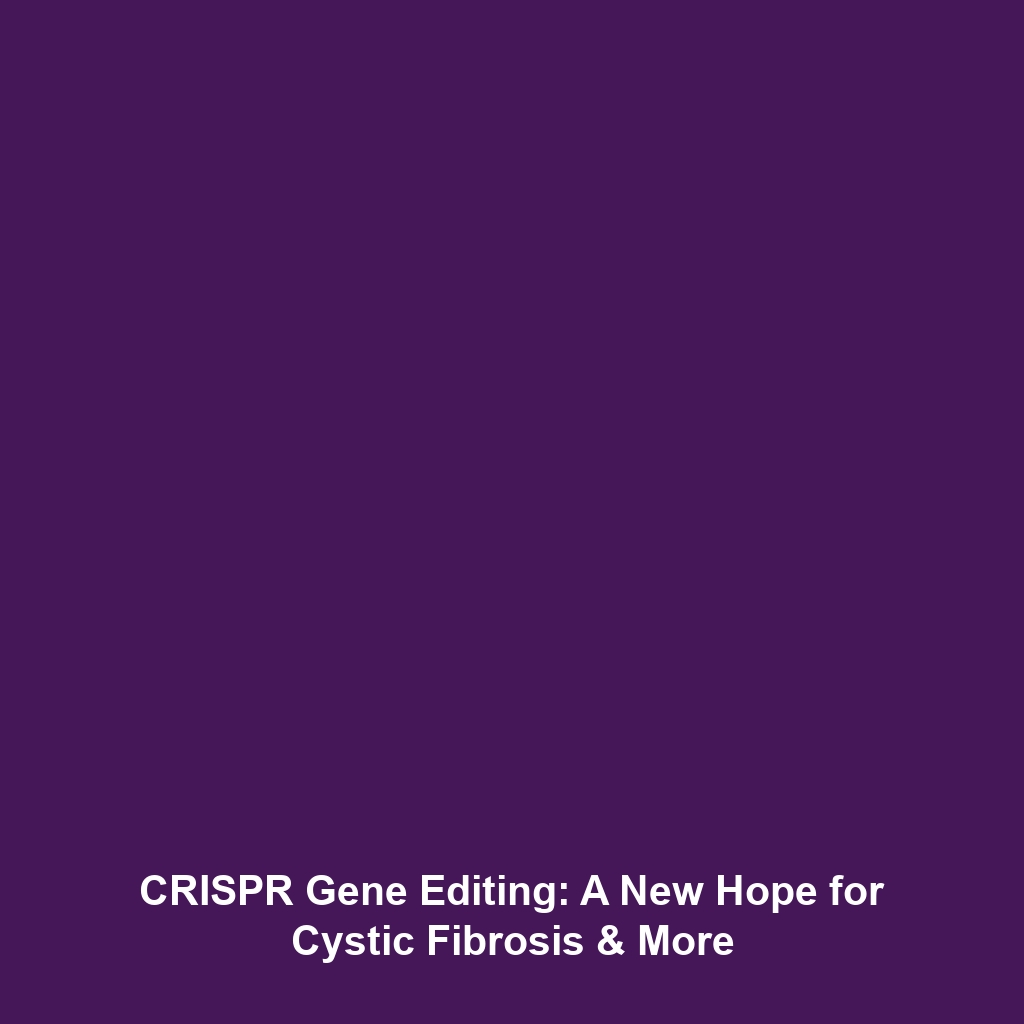Editing Faulty Genes Using CRISPR to Treat Genetic Disorders
Introduction
Editing faulty genes to treat conditions like cystic fibrosis, muscular dystrophy, and sickle cell anemia represents a revolutionary application of CRISPR gene editing. This groundbreaking technology enables researchers to precisely alter DNA sequences, thereby correcting genetic mutations at their source. Such advancements are critically important in the field of medicine, as they hold the promise of eradicating hereditary diseases that have long plagued humanity. In this article, we examine the significance of gene editing within the context of CRISPR, focusing on its potential to transform treatment options for these debilitating conditions.
Key Concepts
Understanding CRISPR Gene Editing
CRISPR, short for Clustered Regularly Interspaced Short Palindromic Repeats, is a natural defense mechanism in bacteria. Scientists have adapted this system to create a powerful gene-editing tool that allows for the precise alteration of genetic sequences. Editing faulty genes utilizes CRISPR’s ability to identify specific locations on the DNA strand, making targeted modifications that can address inherited disorders.
Genetic Disorders Addressed
Cystic fibrosis, muscular dystrophy, and sickle cell anemia are among the most significant diseases that can potentially be treated through gene editing. Each of these conditions results from specific gene mutations that lead to serious health complications. By employing CRISPR technology, researchers aim to repair or replace these faulty genes, opening new avenues for treatment.
Applications and Real-World Uses
The applications of editing faulty genes using CRISPR in treating genetic disorders are vast and groundbreaking. Here are some notable examples:
- Cystic Fibrosis: Recent studies have demonstrated successful gene editing in lung cells to correct mutations associated with cystic fibrosis.
- Muscular Dystrophy: Researchers are exploring the potential of CRISPR technology to modify genes responsible for various forms of muscular dystrophy, aiming to halt disease progression.
- Sickle Cell Anemia: Clinical trials have begun to investigate gene editing approaches to create healthy blood cells from patients’ own stem cells.
Current Challenges
Despite the promise of gene editing, there are several challenges and limitations:
- Off-Target Effects: Unintended edits can occur, leading to possible complications.
- Delivery Mechanisms: Efficiently delivering CRISPR components to the required cells remains a technical hurdle.
- Ethical Considerations: Gene editing raises ethical questions regarding modifications that can be inherited by future generations.
Future Research and Innovations
As research advances, future innovations in gene editing are anticipated to enhance the efficacy and safety of CRISPR technology. Some expected developments include:
- Enhanced precision techniques that minimize off-target effects.
- Improved delivery systems, such as nanoparticles, that can more effectively target specific tissues.
- Next-generation CRISPR tools that enable multiplex editing—simultaneously targeting multiple genes.
Conclusion
In summary, editing faulty genes to treat conditions such as cystic fibrosis, muscular dystrophy, and sickle cell anemia signifies a pivotal advancement in CRISPR gene editing. As ongoing research seeks to overcome existing challenges, the future of gene editing promises innovative treatments that could revolutionize healthcare for hereditary diseases. To learn more about gene editing and its implications, explore our other related articles on CRISPR applications and the ethics of genetic modification.
